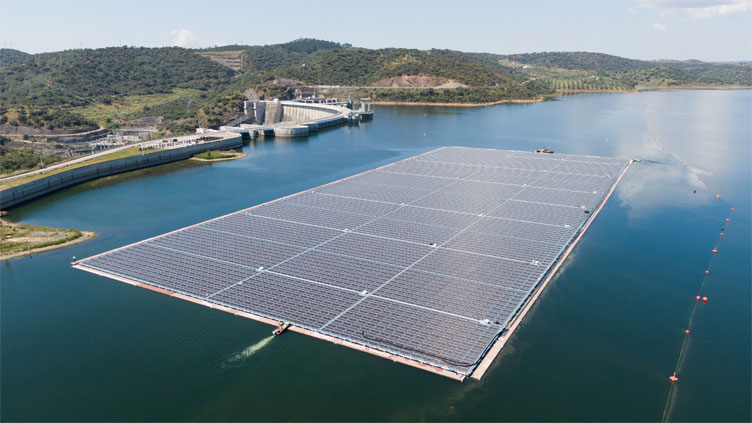Floating solar panels could meet total electricity demands of some countries

Technology
The largest FPV installation is a 6.3MW floating solar farm on London's Queen Elizabeth II reservoir
(Web Desk) - Recent findings from a collaborative study by Bangor and Lancaster Universities, alongside the UK Centre for Ecology & Hydrology, indicate that floating solar photovoltaic (FPV) panels hold the potential to meet the entire electricity demands of select nations.
The study, which assessed over 68,000 lakes and reservoirs globally, suggests that FPV could generate a staggering 1302 terawatt hours (TWh) of electricity annually – four times the UK's total annual electricity consumption.
Identifying optimal locations for FPV installations within 10 kilometers of population centers, away from protected areas, and with minimal freezing periods, researchers propose covering up to 10% of the water's surface, totaling a maximum of 30 square kilometers.
This innovative technology offers numerous advantages over land-based solar installations, including land preservation and improved panel efficiency due to cooler temperatures.
FPV may mitigate water loss through evaporation and prevent algal blooms, though further environmental research is warranted.
“We still don’t know exactly how floating panels might affect the ecosystem within a natural lake in different conditions and locations. However, the potential gain in energy generation from FPV is clear, so we need to put that research in place so this technology can be safely adopted.
We chose 10% of a lake’s surface area as a likely safe level of deployment, but that might need to be reduced in some situations or could be higher in others,” said Dr. Iestyn Woolway of Bangor University and lead author of the paper.
The study highlights the potential for FPV to significantly contribute to global energy needs sustainably. Certain countries, including Papua New Guinea, Ethiopia, and Rwanda, could feasibly power their entire electricity grids with FPV.
Others, such as Bolivia and Tonga, could meet over 87% of their electricity demands. In Europe, nations like Finland and Denmark could substantially supplement their energy needs with FPV.
In the UK, despite limited FPV installations, current data suggests these panels could generate 2.7 TWh annually, enough to power approximately one million homes based on average household consumption.
Notably, the largest FPV installation to date is a 6.3MW floating solar farm on London's Queen Elizabeth II reservoir.
While FPV presents exciting possibilities for renewable energy production, careful consideration of ecological impacts and water body usage is crucial for responsible deployment.
“Even with the criteria we set to create a realistic scenario for deployment of FPV, there are benefits across the board, mainly in lower-income countries with high levels of sunshine, but also in Northern European countries as well.
The criteria we chose were based on obvious exclusions, such as lakes in protected areas, but also on what might reduce the cost and risks of deployment,” Dr Woolway said.
Co-author Professor Alona Armstrong of Lancaster University said: “Our work shows there is much potential for FPV around the world. But deployments need to be strategic, considering the consequences for energy security, nature, and society, as well as Net Zero.”



